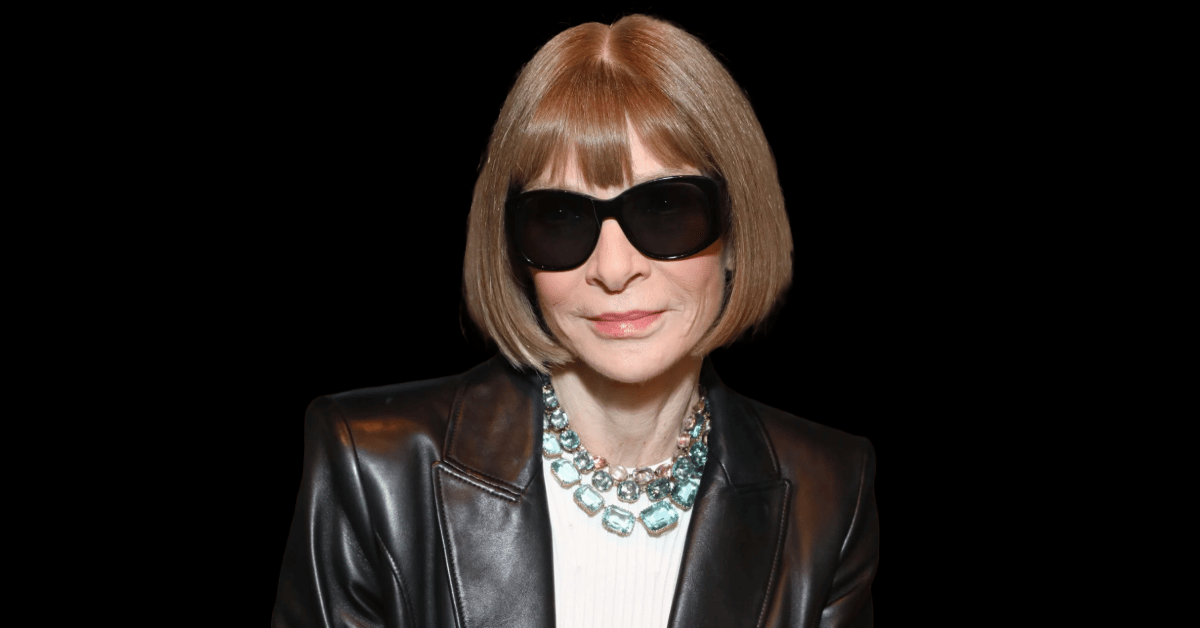
The sunglasses are coming off (literally, maybe?)
I’m sure I don’t need to tell you, as my well-informed marketers will already know, but after more than three decades at the helm of Vogue, Anna Wintour is stepping down. No, this is not a drill. No, the headlines are not being dramatic.
And yes, we’re all feeling a little... bereft. Whether you worshipped her bobbed aloofness or feared being frostbitten by her gaze (same), one thing’s clear: Anna did not run a magazine. She built an empire.
And not just any empire, of course. The fashion-media-industrial complex as we know it. She fused celebrity, style, status, and storytelling into one immaculately tailored brand. Anna went beyond editor-in-chief. A more suitable title would be editor-in-brand.
So, as we light a Diptyque candle in honour of her reign, let’s break down 3 marketing lessons from the woman who turned aloofness into influence and sunglasses into a business strategy.
1. Curate like your life, and brand, depend on it.
Anna Wintour has worn the same haircut since the late 1980s. Her uniform? Impeccable sheath dress, killer heels, Chanel shades. Expression? Unknowable. Vibe? Precision meets quiet terror.
But make no mistake. This wasn’t a lack of imagination. It was a branding power move. She was the human version of a grid layout. Predictable. Controlled. Iconic.
It's the same reason you never saw Steve Jobs outside of his black turtleneck, blue jeans, and New Balance sneakers. Or H. Clints without her pantsuit. Having an iconic style is said to reduce decision fatigue, but it’s also a bold branding move, particularly in a world that demands daily reinvention.
Consistency is disruptive. Your visual identity, tone, and point of view should feel like an old-money surname: hard to earn, impossible to fake. Choose your aesthetic and stick to it. Think less “what’s trending on TikTok,” more “what would Wintour delete from the feed?”
In brand terms, think about how Glossier's pink bubble wrap bag became a Gen Z status symbol. Or how Supreme’s red logo still commands queues down the block all these years later. That’s the power of repeatable, recognisable brand codes.
2. Sell the lifestyle, not the label.
Under Wintour, Vogue transformed from merely being about clothes.
It was about who you became when you wore the clothes. She understood that fashion is fantasy—aspiration wrapped in chiffon. She cast celebrities on the cover when it was still controversial. She turned the Met Gala into fashion's Super Bowl. She got Beyoncé and Kim K to do couture and politics.
Anna turned a print magazine into a lifestyle portal, a political stage, and a cultural weather vane. Why? Because great branding sells a worldview, not a product.
The most magnetic brands make you feel like joining them says something about you. That’s how Patagonia sells fleece and protest. How Nike sells shoes and rebellion. And how Wintour sold Vogue and an entire mythology of status.
Your product is a gateway drug. The real high is identity.
3. Mystery is the ultimate luxury.
We’re in an era where every intern is a micro-influencer and every brand is oversharing on Threads.
But Anna Wintour said, "No thanks." She kept interviews rare, captions non-existent, and her office basically off-limits unless you were Beyoncé, Lagerfeld, or Michelle Obama.
Her power did not scream. It simply whispered while everyone else screamed about it. It goes to show that in the attention economy, mystery can be currency (if done well.)
You don’t need to post every damn second of your life. Instead, create intrigue and let your audience fill in the gaps. I say this with fair warning, however. This is not easy to pull off and you risk fading into irrelevance if you’re simply refusing to post.
But if you want receipts, brands like Bottega Veneta thrived by ghosting Instagram. Early Glossier played the “we’re not like other beauty brands” card with minimalist packaging and coy messaging. Restraint can be your most seductive move.
The legacy is in the branding.
Anna Wintour wouldn’t be caught dead riding a trend. Instead, she anointed them. She did not chase followers, she curated them. Her legacy is less about fashion and more about formidable brand architecture.
Whether you’re building a fashion label, a fintech app, or a niche newsletter about gardening to death metal – there’s a lesson in Wintour’s reign:
Curate like its couture, sell the dream not the SKU, and for the love of branding, stop oversharing every meal and colonoscopy result.
Long live the queen of cold fronts and cover stories.
-Sophie Randell, Writer
Not going viral yet?
We get it. Creating content that does numbers is harder than it looks. But doing those big numbers is the fastest way to grow your brand. So if you’re tired of throwing sh*t at the wall and seeing what sticks, you’re in luck. Because making our clients go viral is kinda what we do every single day.
